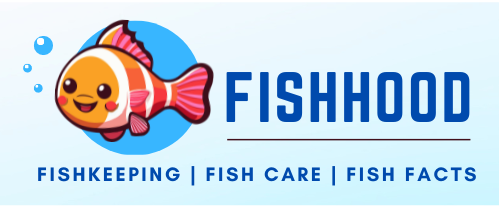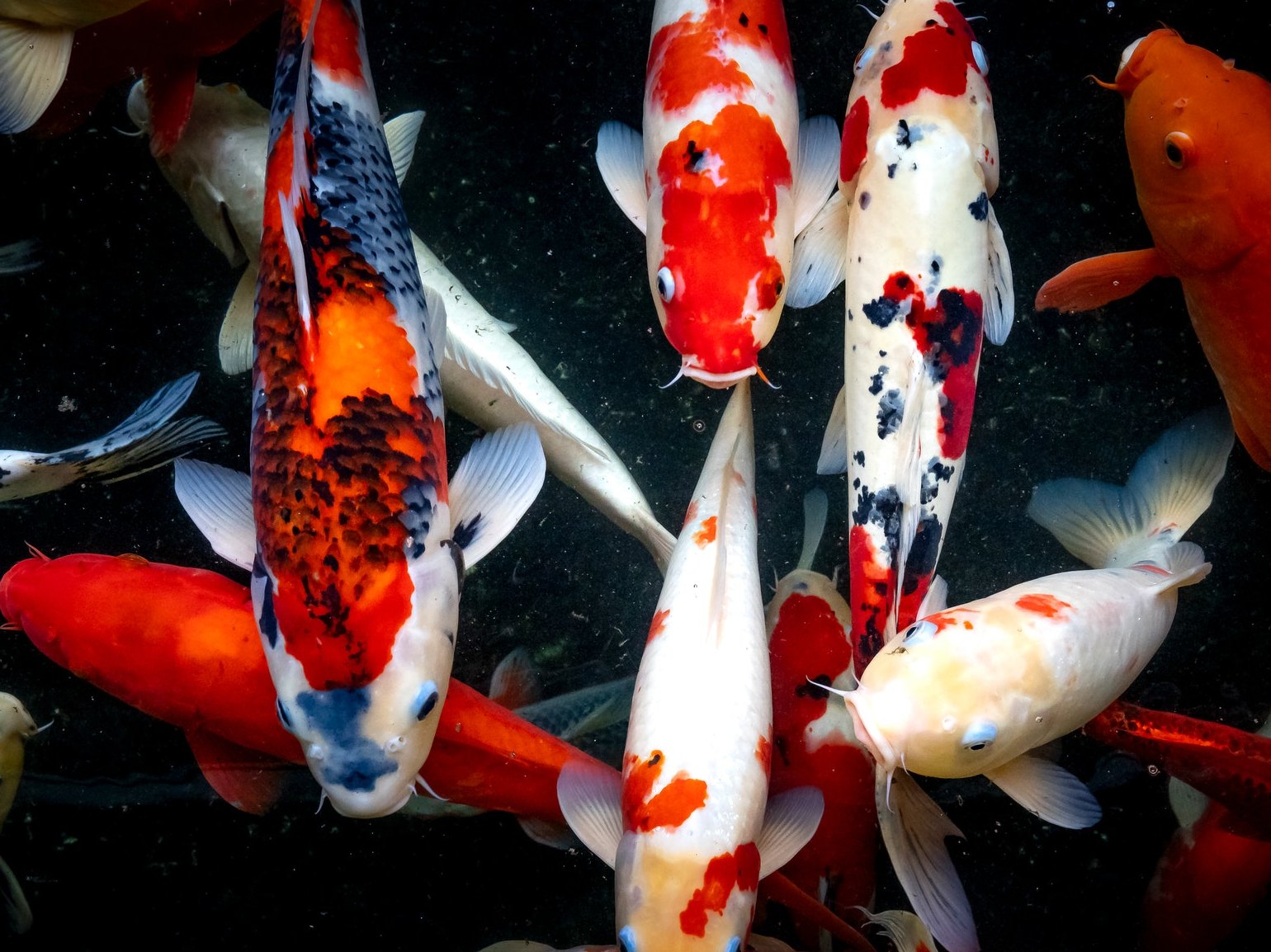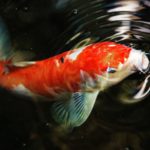The term Goshiki literally means “five colored”, which refers to the red, white, light blue, dark blue, and black coloration of these koi.
There may even be a sixth color evident, when a blue area is overlaid by black, creating a purple shade to it. This category of Koi fish is characterized by its color and falls under the non-metallic koi category.
Non-metallic koi do not have a special glow to their scales compared to their metallic counterpart but definitely have beautiful color patterns. There is considerable variability between the koi of this variety.
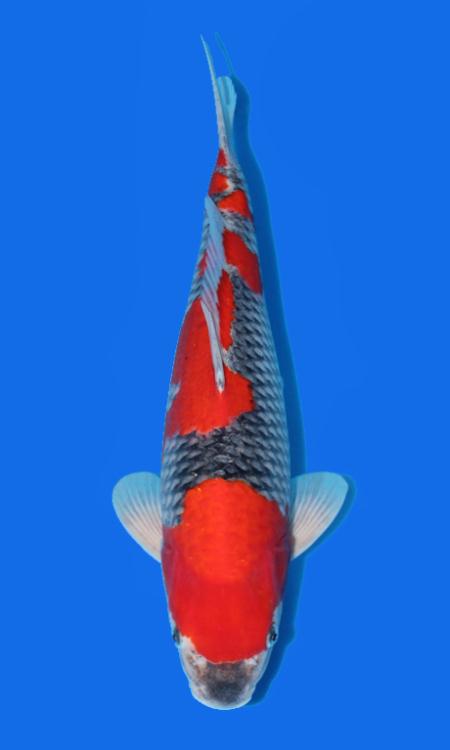
The traditional Goshiki Koi is relatively dark in color, but over recent years, some strains have been developed on much more colorful lines. Goshiki are now generally classified with Koromo but were traditionally included in the Kawarimono category.
Some Goshiki koi come from Asagi lineage and have bluish coloration with a reticulated on the back. Classic Goshiki Koi has larger areas of red and dark reticulated patterning, with little white coloration on the body.
Different types of Goshikis:
1. Kindai Goshiki
Kindai means modern or present day. They have more white background skin than black.
2. Kuro Goshiki
More traditional with a black background skin color with minimal white skin areas.
3. Ginrin Goshiki
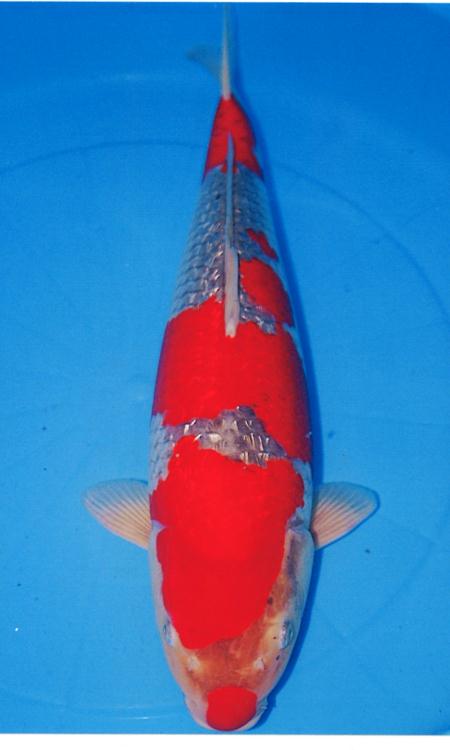
They have shiny scales and a lovely sparkling appearance. Sometimes normally-scaled koi have KinGinRin scales, which are highly reflective, normal-sized scales and these scales look like tiny spotlights running along the sides of the fish and can occur in any color variety.
The KinGinRin scales atop black or white are GinRin (silver). This silvery (Gin Rin) scalation gives the Goshiki its name as Ginrin Goshiki.
4. Mameshibori Goshiki
“Mame” means beans and “shibori” means a type of tie dyed fabric in Japanese. It has dot pattern on the scales.
5. Nezu Goshiki
“Nezu/Nezumi” means gray color. It has a gray colored skin with or without matsuba pattern scale.
How Do I Choose A Good Goshiki
Choosing or picking a young or a baby Goshiki can be a challenging task. When you Choose a Goshiki you should make sure that it is as light as possible, meaning that it should be orange looking but the areas in between the red markings should be light. In young Goshiki the black markings takes longer time to develop.
Some baby Goshiki looks like Kohaku koi at an early age, and the blue and black coloration starts appear after six or sometimes twelve months. These babies have very faded black pattern in between the red markings.
At first the baby Goshiki has a white background with obvious red markings on its body giving it a Kohaku appearance and then after few months the Asagi bloodline kicks in giving it a gray/black and blue color depending on where it is developing on its skin.
Choosing A Good Adult Goshiki is much easier than choosing a baby. In the US some people prefer the black and red markings to be dominant while some prefer Gin Rin Goshiki.
Some collectors prefer the traditional Goshiki while some prefer the more modern ones with red and blue markings to be dominant on its skin.
Characteristics To Consider When Buying A Goshiki
- Gray coloration on the nose is preferred.
- Red markings should not cover the eyes.
- Red coloration should not be present on the fins and the tail section.
- Intensity of the red should be consistent and no black dots should be visible on the red marking areas of the koi.
Effect Of Water Temperature On Goshiki Koi
The lower the water temperature is, the intense the black coloration is. When the baby Goshiki is growing and if it is very cold in the pond they are growing in or it is winter time the black coloration starts to be more intense.
The warmer the water is, the lighter the black coloration is on the Goshiki. In summer time the babies tends to grow faster.
Are Goshiki Koi Fish Friendly In Nature
Goshiki appears to be friendly and not scared of humans. They are sometimes held up by their respective keepers.
I found that most of these koi fish are not struggling for few seconds, but if you continue to hold them up from the water they get uncomfortable and start to shake their bodies.
I have also noticed that they eat their food from the hands of their masters or koi keepers. You can read more on what do koi fish eat? in my other article. They are friendly and are a good temperament fish for your pond.
